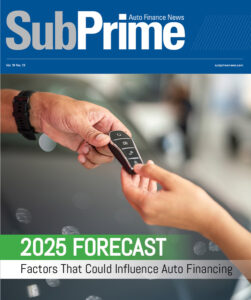CNW: Average FICO Dips, More Women Turn to Plastic for Down Payments
BANDON, Ore. — CNW Research discovered that as banks, captives, credit unions and others tried to leverage the Cash for Clunkers, they allowed average FICO scores to dip.
More specifically, the average FICO score, including cash, finance and lease customers, came in at 706.58 as of Aug. 15. In the prior month, the score averaged 714.82. This is actually the largest median month-over-month FICO drop all year.
When comparing FICOs month-over-month earlier in the year, these scores have been slowly creeping downward since January. In June, the FICO median was 718.28, down from 719.72 in May and 720.49 in April.
In fact, according to CNW data, the highest average FICO score came in January at 726.05.
"Also noteworthy, FICO scores at the end of July and opening weeks of August slid as banks, captive credit companies, credit unions, et al, tried to get into the C4C action," pointed out Art Spinella, of CNW Research.
"Cash for Clunkers also sucked 140,000 individuals from the pent-up demand column," he added, going on to note, "Incentives were pulled back, not eliminated but reduced. C4C vouchers took the place of manufacturer discounts in large part sending the manufacturers' per-unit incentive figure to $3,621 versus last year's $3,855."
CNW also reported that the median age of new-car purchasers declined a bit to 47.8 years in July, even though the program was only in effect for about a week. Furthermore, the sales action in first 15 days of August led to another drop in median age of buyers to 46.7 years.
"Why is this important?" asked Spinella. "Enticing younger consumers into showrooms is essential for growth. The 35-49 age group represents prime new-car buying years with more frequent turnover than either younger or older customers. These people have been generally out of the market for at least two years."
Credit Card Down Payments
Also of interest, while most creditors are not thrilled with the practice, Spinella said that about 5 percent of new-vehicle purchasers used a credit card for their down payments.
CNW indicated that women are turning to plastic in higher numbers.
"In 2000, about a quarter of women new-car buyers used a credit card. That's grown to nearly 37 percent this year," Spinella explained.
However, on an overall basis, the 5 percent average this year is actually two points less than last year when credit was starting to tighten and financial institutions required more down.
"The average amount put on a card in 2008 reversed a long-term trend. For years the amount covered by plastic had been growing and hit $2,632 in calendar-year 2007, falling to $2,400 in 2008 and again slipping in 2009 to $2,265," Spinella reported.
"Why the shrinkage? One reason, credit cards have been canceled by some banks and many are still close to maxed out. In the former case, households with multiple credit cards from the same financial institution have seen have seen at least one card canceled and the credit line reduced on the second. Both conditions lead to less available plastic funds," he continued.
Offering further insight, Spinella surmised that consumers are "getting serious" about their usage of cards.
"Overusing credit is a tough habit to break and since we haven't come out of the recession, we don't know if the lesson is truly learned or just a temporary case of sanity," he suggested.
Consumers Want Lower Monthly Payments
Another trend CNW discovered is that the amount new-car buyers are willing to spend on monthly payments decreased for the second consecutive year to $327. This is down from $341 in 2008 and $362 in 2007.
"The current threshold isn't the lowest it has been since 1990. That occurred in 1996 during the height of the leasing craze. Consumers became accustomed to hearing about vehicles available for $199 per month and automatically lowered the amount they would be willing to spend for a new car or truck," Spinella said.
When the leasing craze concluded, thresholds trended upward until 2001 when General Motors kicked off its most recent round of "big-time incentives," he added.
On another note, Spinella went on to briefly discuss incentives, saying, "It won't be easy, but with short inventories and the eventual turnaround of the economy, it is likely that incentives will begin to diminish over time bringing some pricing stability to the marketplace.
"Assuming no one breaks ranks, it's even possible incentives could be reduced to an occasional ‘spring fling' or ‘winter clearance venue,'" he continued. "We can only hope."

 View The Latest Edition
View The Latest Edition

